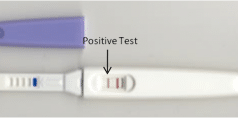
If you’ve been prescribed a bladder medication to manage incontinence, it’s important to know if there are any adverse side effects. Popular medications to treat bladder issues include Elmiron, which is prescribed to manage symptoms of interstitial cystitis (IC).
IC is a condition that affects women more than men and causes pressure and pain in the bladder. In most cases, Elmiron’s side effects are mild and will stop once the body is accustomed to the medication.
Common Side Effects Of Elmiron
According to research, about 2,627 patients experienced side effects from taking Elmiron if the medication is taken as prescribed. In the research study, 1 to 4% of patients had side effects. About 1.3% of these patients, which is 33 patients, had serious side effects. Six patients taking Elmiron passed away, but it appears that other health problems led to the deaths.
Hair loss was the most common side effect. This condition is also known as alopecia. Patients reported that alopecia began within the first month of taking Elmiron. Around 97% of patients reported losing hair in one spot. The hair usually grew back after the patient stopped using the medication.
In addition to hair loss, 4% of patients experienced diarrhea, 4% had nausea, 3% had headaches, and 3% of patients developed a rash. Two percent of the patients had abdominal and digestive discomfort, 2% experienced abdominal pain, 1% had abnormal liver function tests, and 1% had dizziness.
Elmiron And Vision Damage
In June 2020, a warning was added to Elmiron from Janssen Pharmaceuticals to indicate that the medicine could cause retinal pigmentary changes. These changes are known as pigmentary maculopathy, and the condition is associated with using Elmiron long-term. The longer a patient takes Elmiron and the higher the dosage is, the higher the risk for pigmentary maculopathy.
It is not clear what causes the retinal pigmentary changes. However, in most instances, the condition occurred in people who were using Elmiron for three years or longer; some patients who took the medicine for a shorter period of time also experienced pigmentary maculopathy.
Of the reported cases, vision changes include:
- blurred vision
- difficulty reading
- slow vision adjustment to low lighting
According to prescribing information for Elmiron, vision tests are recommended within six months of starting the medication. Patients should also receive periodic vision tests after the six-month period. Some individuals continued to have vision problems even after they were no longer taking Elmiron.
Individuals who suffered vision damage from taking Elmiron filed lawsuits against Janssen Pharmaceuticals, citing that the corporation did not properly warn about the risk of taking Elmiron.
Additional Information About FDA-Reported Side Effects
Data available on the FDA Adverse Event Reporting System (FAERS) for Elmiron and its generic name “pentosan polysulfate sodium” from 1997 to June 30. 2020 revealed that there were 2,570 reports of side effects. Of the reports that were found in the database, 1,748 were serious side effects, and this included 24 deaths of patients who took Elmiron. The reports listed in the database were voluntary, and the FDA cannot confirm whether the adverse side effects were directly related to taking Elmiron. In the data, 202 eye disorders were reported, including blurred vision maculopathy, and visual impairment.
Bottom Line
Vision problems are a serious medical matter and could affect you for the rest of your life. If you were taking Elmiron and started experiencing vision problems after starting the medication, talk to a medical malpractice lawyer to start the process of filing a medical malpractice lawsuit. Your lawyer will review all the details of your Elmiron eye injury lawsuit and guide you through the process of getting the compensation you deserve for your injuries.








